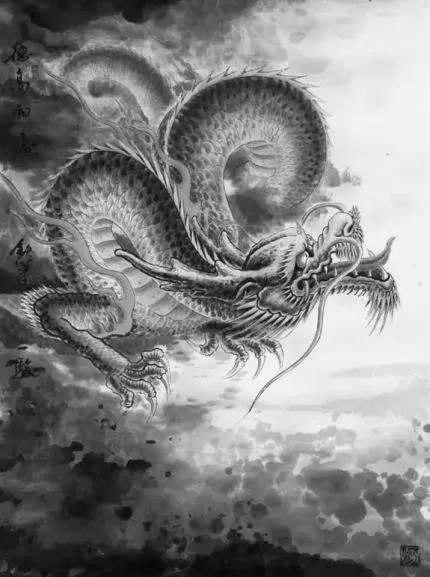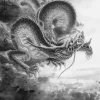In China, dragons are worshipped as a deity. You may know the Shennong or Kuilong, or Tao Tie Taotie. These dragons are symbols of life and death and are essential in many cultures. The myths surrounding these dragons vary considerably, representing something different.
Kuilong
Throughout history, Chinese people have worshiped dragons as gods. Dragons are the most popular gods in Chinese mythology. Legends say that the Chinese dragon, Kuilong, first became associated with humans around 5000 years ago. During different dynasties, the dragon’s shape and mythology changed slightly. It is sometimes seen as the god of the sea, while at other times, it is revered as the protector of life, family, and the nation.
The Chinese dragon, or Kuilong, was a mythical creature, black in color, with no horns and only one leg. He was believed to bring rain and wind when he dwelt in the water. His motif is found in Chinese bronzes from the Shang dynasty. It consists of abstract geometric dragons interwoven in a continuous twisted design. In addition to Kuilong, the Chinese dragon god Shenlong is another deity associated with water. He has a human-like head, a dragon-like body, and a drum-like stomach.
The Chinese dragon is widely known to be a powerful symbol and is present in festivals, art, and mythology. It represents power and prosperity and is a common symbol of luck and good luck. Unlike Western dragons, however, the Chinese dragon does not harm humans. A dragon’s image is also widely used in Chinese architecture, art, and literature.
The dragon is a powerful Chinese deity, and many villages have temples or shrines dedicated to him. In pre-modern times, the locals would offer sacrifices to the dragons, which were said to bring good harvests and weather throughout the year. In addition, the dragon was believed to protect crops from floods and droughts.
Another Chinese dragon deity is Fucanglong, the guardian of jewels and precious metals in the underworld. The dragon also rules over volcanoes, which erupt from the earth. In Chinese mythology, the dragon is the symbolic father of early Chinese emperors.
The dragon has nine different attributes. Some of its parts are similar to those of nine other creatures. The winged dragon is said to live in the sky. It is the ancestor of dragons and controls the four seasons. Other dragons are the coiling and horned dragons, which are believed to hold time.
Shenlong
The Chinese dragon deity Shenlong is the god of the wind, rain, lightning, and thunder. He rules all of these elements and is considered fierce and angry. As a result, he is often the cause of bad weather. However, Shenlong is often very loving and kind despite his violent nature. However, when he feels disrespected, he will cause lousy weather. He is also said to have the power to control air currents and storm clouds, which means that he can manipulate weather conditions. He can even handle a city’s storms.
Shenlong is also believed to have spiritual abilities. In ancient times, people feared offending Shenlong as it could bring about bad times and storms. As a result, people took great care not to offend the dragon. If they did, they would have the same effect as their offspring. The offspring’s powers would increase by two, three, four, five, or six times depending on the situation.
According to Chinese mythology, dragons are mythical creatures. In addition to being a powerful protector of the underworld, they can also protect humans from hidden treasures. While most Chinese dragons are wingless, particular types have two wings. These are the ones who bring clouds, rain, and floods to humans. These dragons have been around for hundreds of years.
Dragons are worshipped in many parts of the world. Many people in China worship dragons as gods. They are also believed to have power over nature and can control floods. As such, Chinese people often burn incense in temples to invoke dragons. The dragons are supposed to protect life, families, and the nation.
The Chinese dragon has a long serpentine body and is wingless. The dragon is an important symbol of China and part of Chinese culture and mythology. It is seen everywhere, including tattoos and fashion, and represents many things related to Chinese culture. Dragons symbolize power, wisdom, wealth, and good fortune in China. Despite its fierce appearance, the dragon is not a threat to humans.
Dragons also figure in other Asian cultures. For example, dragons are present in the mythologies of Korea, India, and Vietnam.
Tao Tie Taotie
Tao Tie, the Chinese dragon deity, has been around for thousands of years. The first mention of Taotie appears in the Han period story collection Shenyijing, where it is described as a pig-headed anthropomorphic creature with a voracious appetite. According to legend, Taotie would devour humans and rob them of their belongings. He was also known for attacking weak travelers.
Many believe Tao Tie came from the Jin Yun clan, a branch of the Yellow Emperor’s tribe. Tao Tie’s image appears on the surface of dings and other sculptural objects. It commands through vibrations.
The Chinese dragon deity is often referred to as the Glutton. This mythical creature cannot distinguish between good and evil and will instigate conflict between noble people of evil. Because of this, Taotie often decorates ancient weapons and other items. The dragon’s appearance is savage, which reflects its dual nature. However, the Taotie does have a pleasing aesthetic quality.
Tao Tie Chinese dragon deity is often depicted as a motif on bronze dings dating from the Shang (1746-406 BCE) and Zhou (tenth century BCE). Tao Tie is typically a frontal or bilaterally symmetrical mask. It is a powerful deity of longevity and immortality. His image is also represented in the main Confucius temple in Taipei.
Many different names know the Chinese dragon deity. Tao Tie translates to “ogre” and “glutton,” representing the ancient Shang dynasty pantheon. Among its many characteristics, it is known for being beautiful and mysterious.
Tao Tie Chinese dragon deity has two breeds: Soldiers and Defenders. The Soldiers are the most common, while the Defenders are smaller and fewer in number. The Defenders protect the Queen from the soldiers. They are also extremely greedy.







